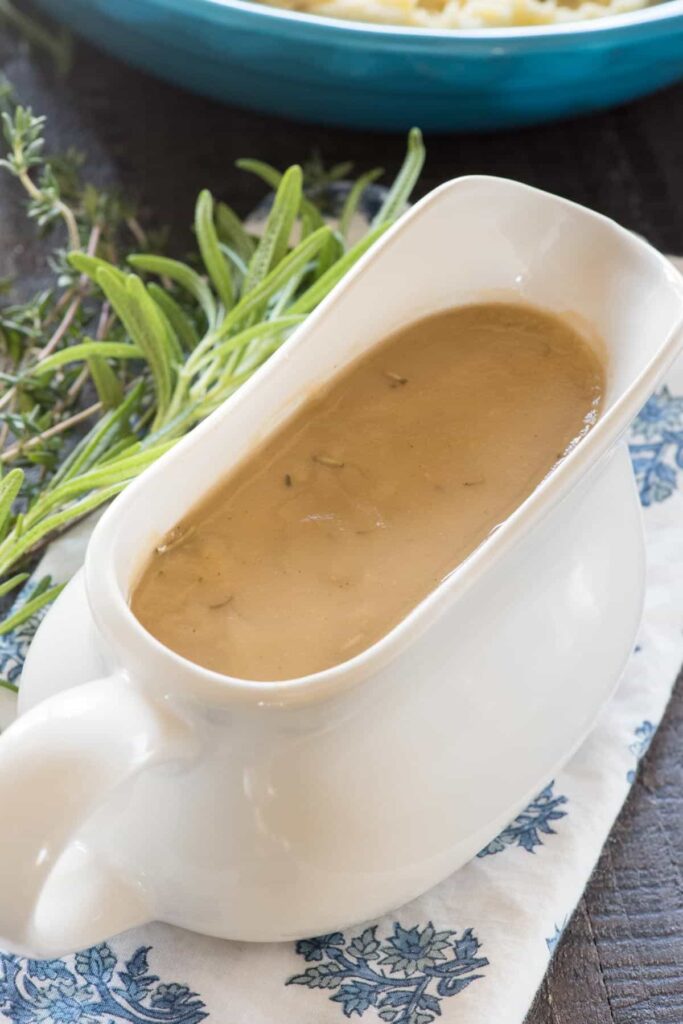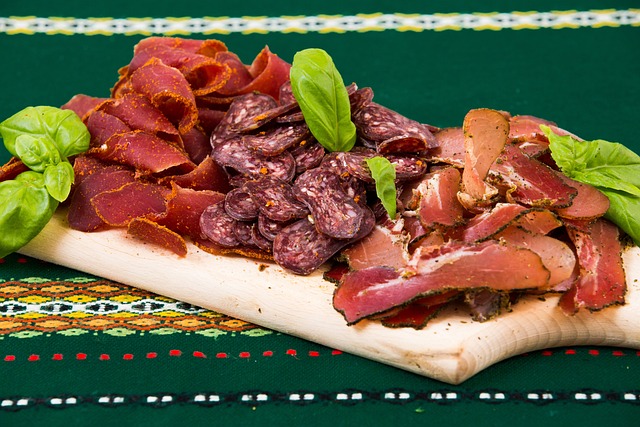
Have you ever wondered what’s so special about gravy? I mean, it’s just a sauce, right? Well, you’re in for a treat because I’m here to tell you all about it. In this article, we’ll delve into the world of gravy and explore its rich and delicious flavors. Whether you’re a seasoned cook or a beginner in the kitchen, there’s always something new to learn about this versatile sauce.
Now, let’s talk about what makes gravy so special. First of all, it’s all about the flavors. Gravy has the power to enhance the taste of any dish it accompanies. Whether it’s poured over a roast, mashed potatoes, or even a Thanksgiving turkey, the combination of savory flavors and smooth texture creates a magical culinary experience. But it’s not just about taste – gravy also adds depth and richness to a meal. With its thick consistency, it brings a satisfying element to the plate, making each bite more enjoyable. In this article, I’ll be sharing some tips and tricks on how to make the perfect gravy that will leave your taste buds begging for more. So, stay tuned and let’s uncover the secrets behind this delightful sauce.
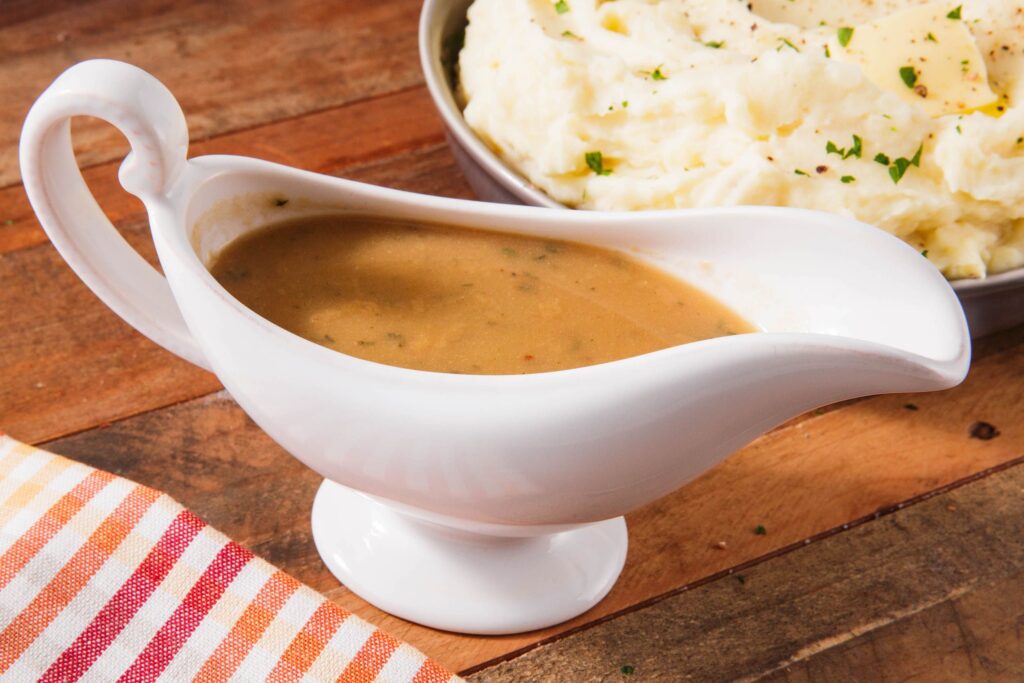
Table of Contents
What’s So Special About Gravy?
Gravy is a beloved and versatile sauce that adds flavor, richness, and depth to countless dishes. Whether it’s drizzled over a roast, poured onto mashed potatoes, or used as a base for a casserole, gravy has earned its place on the dining table. In this article, we’ll explore the origins and cultural significance of gravy, the different types of gravy, simple gravy recipes, key ingredients, cooking techniques, common uses, healthier alternatives, tips for perfecting gravy, and gravy variations across different cuisines.
Understanding Gravy
Before we dive into the specifics, let’s first define what gravy actually is. Gravy can be described as a sauce made from the meat juices and flavorful drippings that are released during the cooking process. It is typically thickened with flour or cornstarch and seasoned with various spices and herbs.
Origins of Gravy
The exact origins of gravy are difficult to pinpoint, as the concept of using meat drippings as a sauce has been around for centuries. However, gravy as we know it today has its roots in French cuisine. French chefs in the 18th century developed a technique known as “sauce espagnole,” which involved simmering browned flour and meat stock to create a rich and flavorful sauce. This technique was then adapted and modified by different cultures around the world.
Cultural Significance
Gravy holds a special place in many cultures and cuisines. In Western countries, it is a staple accompaniment to roast meats such as beef, turkey, and chicken. In the United States, gravy plays a prominent role in Southern cuisine, where it is poured over biscuits or used to make the traditional sausage gravy. Gravy is also a significant component in British cuisine, where it is served with the iconic Sunday roast.
Different Types of Gravy
Gravy comes in various forms and flavors, each with its own unique characteristics. Here are some popular types of gravy:
Brown Gravy
Brown gravy is perhaps the most well-known and versatile type of gravy. Made from the drippings of roasted meats, it has a rich, savory flavor and a deep brown color. Brown gravy is commonly used as a sauce for meat dishes or as a base for stews and casseroles.
White Gravy
White gravy, also known as country gravy, is a creamy and savory sauce that is often associated with Southern cuisine. It is made from a roux (a mixture of fat and flour) and milk or cream. White gravy is typically seasoned with black pepper and served over biscuits, fried chicken, or mashed potatoes.
Sausage Gravy
Sausage gravy is a classic Southern dish that combines white gravy with crumbled sausage. The sausage adds a deliciously savory and spicy flavor to the gravy, making it the perfect accompaniment to biscuits or breakfast foods.
Vegetarian Gravy
Vegetarian gravy is a plant-based alternative to traditional meat-based gravies. It is usually made from vegetable broth or mushroom stock, and thickened with flour or cornstarch. Vegetarian gravies can be just as flavorful and satisfying as their meat-based counterparts.
Mushroom Gravy
Mushroom gravy is a flavorful and earthy sauce that pairs well with roasted vegetables, mashed potatoes, or grilled meats. It is typically made by sautéing mushrooms with onions and garlic, then simmering them in a combination of broth and cream or wine.
Red-Eye Gravy
Red-eye gravy is a unique and tangy sauce that is traditionally served with country ham in the Southern United States. It is made by deglazing the skillet used to cook the ham with black coffee, resulting in a rich and slightly bitter sauce.
Simple Gravy Recipes
Making homemade gravy is surprisingly easy and requires only a few basic ingredients. Here are some simple gravy recipes to get you started:
Basic Brown Gravy
Ingredients:
- 2 tablespoons fat (such as butter, bacon drippings, or vegetable oil)
- 2 tablespoons all-purpose flour
- 2 cups beef or chicken broth
- Salt and pepper to taste
Instructions:
- Heat the fat in a skillet over medium heat.
- Add the flour and whisk continuously until it turns golden brown, about 2 minutes.
- Slowly pour in the broth, whisking constantly to avoid lumps.
- Bring the mixture to a simmer and cook until thickened, about 5 minutes.
- Season with salt and pepper to taste.
Classic White Gravy
Ingredients:
- 2 tablespoons butter
- 2 tablespoons all-purpose flour
- 2 cups milk
- Salt and black pepper to taste
Instructions:
- Melt the butter in a saucepan over medium heat.
- Add the flour and whisk until smooth.
- Gradually whisk in the milk, continuing to whisk until the mixture thickens.
- Cook for an additional 2-3 minutes, or until the gravy reaches the desired consistency.
- Season with salt and black pepper to taste.
Southern-Style Sausage Gravy
Ingredients:
- 1 pound breakfast sausage
- 1/4 cup all-purpose flour
- 2 cups milk
- Salt and black pepper to taste
Instructions:
- Cook the sausage in a skillet over medium heat until browned and crumbled.
- Sprinkle the flour over the sausage and stir until well coated.
- Gradually pour in the milk, stirring constantly to prevent lumps from forming.
- Cook for 5-7 minutes, or until the gravy thickens.
- Season with salt and black pepper to taste.
Mouthwatering Vegetarian Gravy
Ingredients:
- 2 tablespoons butter
- 2 tablespoons all-purpose flour
- 2 cups vegetable broth
- 1 tablespoon soy sauce
- 1/2 teaspoon dried thyme
- Salt and black pepper to taste
Instructions:
- Melt the butter in a saucepan over medium heat.
- Stir in the flour and cook for 1-2 minutes, until golden brown.
- Slowly whisk in the vegetable broth, soy sauce, and dried thyme.
- Bring the mixture to a simmer and cook for 5 minutes, or until thickened.
- Season with salt and black pepper to taste.
Creamy Mushroom Gravy
Ingredients:
- 2 tablespoons butter
- 8 ounces mushrooms, sliced
- 1/4 cup all-purpose flour
- 2 cups vegetable or chicken broth
- 1/4 cup heavy cream
- Salt and black pepper to taste
Instructions:
- Melt the butter in a skillet over medium heat.
- Add the mushrooms and cook until they release their moisture and turn golden brown.
- Sprinkle the flour over the mushrooms and stir until well coated.
- Gradually pour in the broth, stirring constantly to prevent lumps.
- Cook for 5-7 minutes, or until the gravy thickens.
- Stir in the heavy cream and season with salt and black pepper to taste.
Traditional Red-Eye Gravy
Ingredients:
- 4 slices country ham
- 1 cup black coffee
Instructions:
- Cook the ham slices in a skillet over medium heat until browned and crispy.
- Remove the ham from the skillet and set aside.
- Pour the black coffee into the skillet and cook, stirring, until it reduces slightly, about 2-3 minutes.
- Serve the red-eye gravy over the ham slices.
Key Ingredients in Gravy
To create a delicious and flavorful gravy, several key ingredients are needed. Here are the essentials:
Flour
Flour serves as the thickening agent for gravy. It is typically added to fat (such as butter or oil) to create a roux, which helps to thicken the sauce. All-purpose flour is commonly used, but other types of flour, such as cornstarch or gluten-free flour, can be used as alternatives.
Fat
Fat is crucial for adding flavor and richness to gravy. It also helps to create a smooth and velvety texture. Common sources of fat for gravy include butter, bacon drippings, or vegetable oil. The choice of fat can vary depending on personal preference and dietary restrictions.
Broth/Stock
Broth or stock forms the base of gravy. It provides the liquid component and enhances the flavor profile. Beef, chicken, or vegetable broth are commonly used, but other types of stock, such as mushroom or turkey, can also be used to add depth and complexity to the gravy.
Seasonings
Seasonings play a vital role in enhancing the flavor of gravy. Salt, black pepper, garlic powder, onion powder, and other herbs and spices can be added to create a well-balanced and savory sauce. The choice and amount of seasonings can be adjusted to taste.
Aromatics
Aromatics such as onions, garlic, and herbs can be sautéed or simmered in the gravy to add additional depth and complexity. These ingredients infuse the sauce with their flavors and aromas, making the gravy even more enticing.
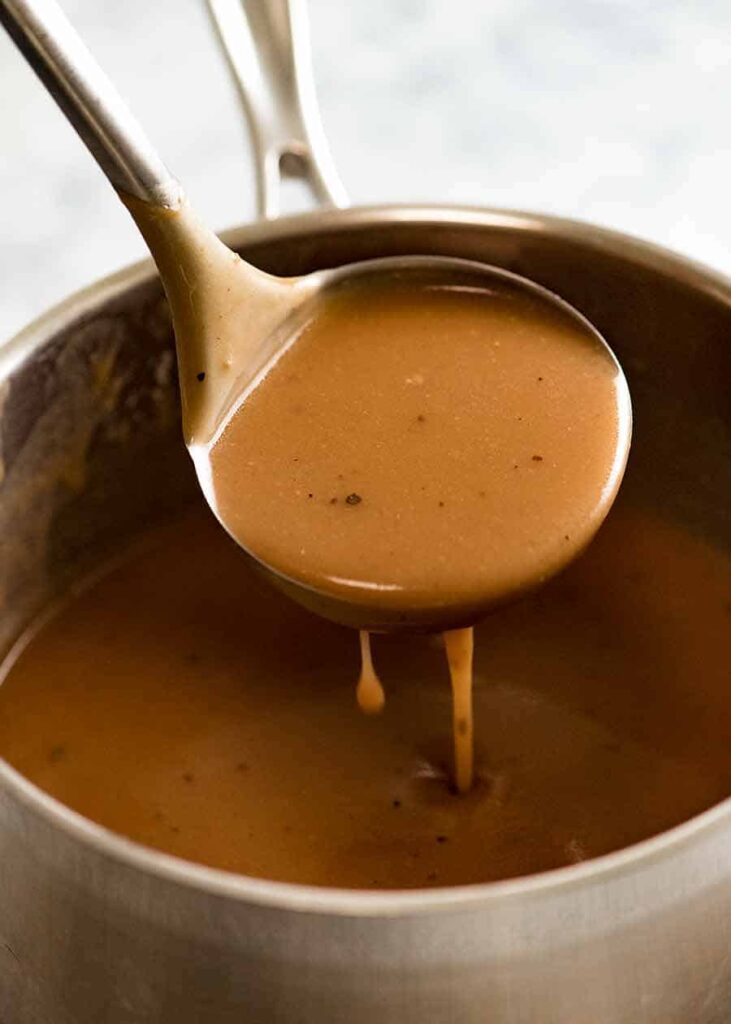
Cooking Techniques for Perfect Gravy
Creating a perfect gravy requires the application of specific cooking techniques. Here are some techniques to consider:
Roux Method
The roux method involves creating a mixture of fat and flour, which is then cooked to achieve a desired level of browning. This mixture is the foundation of many gravies and helps to thicken and enhance their flavor.
To make a roux, simply melt the fat in a skillet over medium heat and gradually whisk in the flour until well combined. Cook the mixture, stirring continuously, until it turns golden brown. This technique helps to eliminate the raw flour taste and adds a nutty flavor to the gravy.
Cornstarch Slurry
Cornstarch can be used as an alternative to flour for thickening gravy. To create a cornstarch slurry, mix cornstarch with a small amount of cold water until it forms a smooth paste. Gradually whisk this paste into the gravy, simmering until the desired thickness is reached. Cornstarch is particularly useful for gluten-free or low-carb gravy options.
Reducing and Thickening
Reducing and thickening is a technique used to concentrate the flavors and thicken the consistency of gravy. Simmering the gravy uncovered over low heat allows some of the liquid to evaporate, resulting in a more intense flavor. Additionally, a cornstarch slurry or roux can be added to achieve the desired thickness.
Deglazing
Deglazing refers to the process of adding liquid (such as broth, wine, or coffee) to a hot pan to loosen the browned bits stuck to the bottom. These flavorful bits, often called “fond,” are then incorporated into the gravy, adding complexity and depth.
To deglaze a pan, simply pour the liquid into the hot skillet and use a wooden spoon or spatula to scrape the bottom, releasing the fond. This technique is commonly used when making brown gravies or gravies that accompany roasted meats.
Whisking
Whisking is a crucial step in making gravy to ensure a smooth and lump-free texture. Whisking should be done continuously, especially when adding the flour or cornstarch, to prevent clumps from forming. A wire whisk is the ideal tool for this task.
Common Uses of Gravy
Gravy is an incredibly versatile sauce that can be used in various ways. Here are some common uses of gravy:
Accompaniment to Roast Meats
Gravy is the perfect accompaniment to roast meats, such as beef, turkey, or chicken. It adds richness and moisture to the meat and enhances the overall flavor profile. Whether it’s a classic Thanksgiving turkey or a succulent roast beef, adding a generous drizzle of gravy takes the dish to another level.
Dressing for Mashed Potatoes
Mashed potatoes and gravy are a classic combination that never fails to satisfy. The creamy texture of the mashed potatoes pairs perfectly with the savory and flavorful gravy. Pouring gravy over a heaping mound of mashed potatoes creates the ultimate comfort food experience.
Pouring Over Biscuits
In Southern cuisine, biscuits and gravy are a beloved breakfast staple. Soft and flaky biscuits are smothered in a generous helping of creamy and savory sausage gravy. The combination of textures and flavors is hard to resist, making it a popular choice for a hearty morning meal.
Topper for Poutine
Poutine, a Canadian dish originating from Quebec, consists of crispy french fries topped with cheese curds and smothered in rich brown gravy. The combination of crispy fries, melty cheese, and savory gravy creates a mouthwatering dish that has gained popularity worldwide.
Enhancing Casseroles
Gravy can also be used as a base or enhancer for various casseroles. Whether it’s a chicken pot pie or a shepherd’s pie, adding a layer of gravy to the filling adds moisture and flavor to the dish. Gravy helps bind the ingredients together and creates a cohesive and satisfying casserole experience.
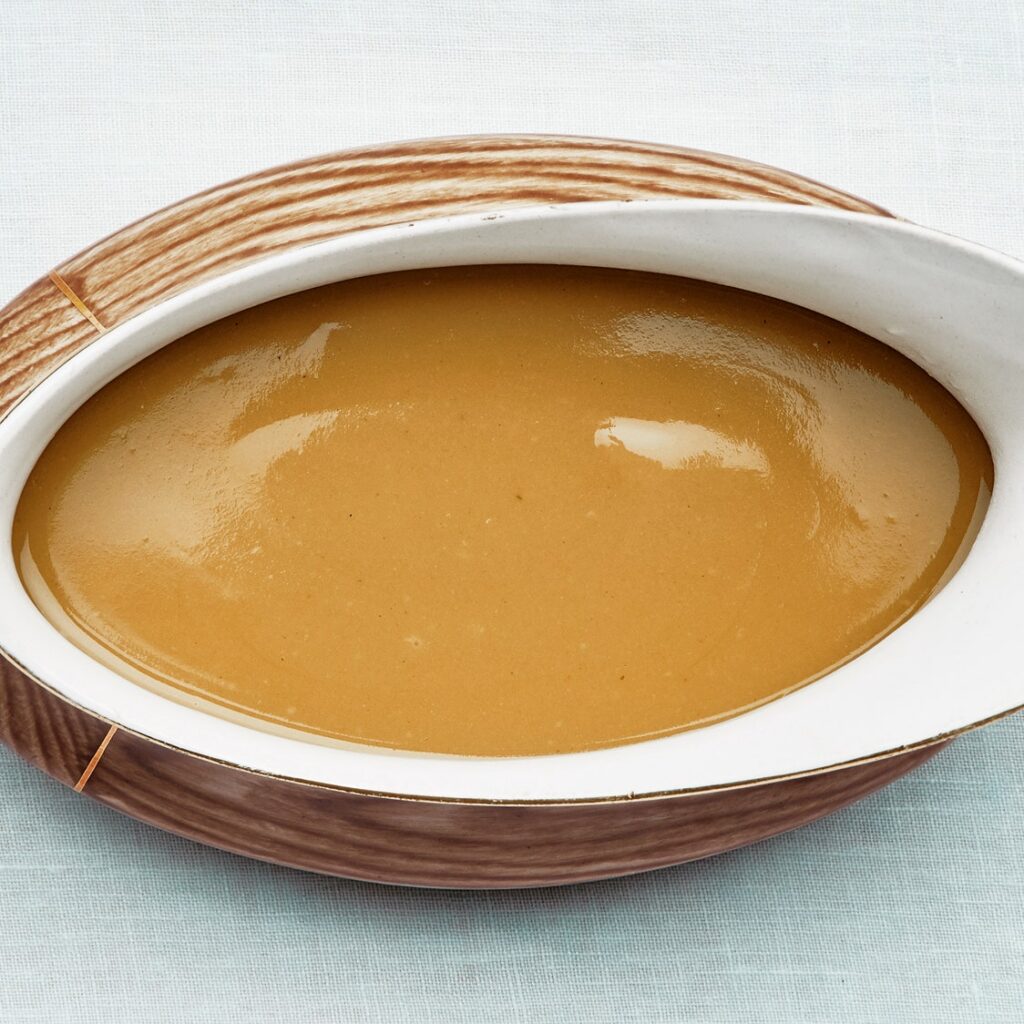
Healthier Alternatives to Traditional Gravy
For those looking for healthier alternatives or catering to specific dietary needs, there are several options available. Here are some healthier alternatives to traditional gravy:
Reduced-Fat Gravies
Reduced-fat gravies can be achieved by using skimmed or low-fat milk instead of whole milk or cream. Additionally, reducing the amount of fat used in the roux or choosing leaner meat options can also lower the overall fat content of the gravy.
Gluten-Free Gravies
For individuals with gluten intolerance or celiac disease, gluten-free gravies are a must. Gluten-free flours, such as rice flour or cornstarch, can be used as a substitute for wheat flour. They provide the necessary thickening without compromising taste or texture.
Low-Sodium Gravies
To reduce sodium content in gravy, opting for low-sodium broth or stock is essential. Homemade broth or stock with no added salt can also be used. Utilizing fresh herbs, spices, and aromatics allows for flavor enhancement without relying heavily on salt.
Vegan Gravy Options
Vegan gravies are suitable for those following a plant-based lifestyle. Instead of meat drippings, vegetable stock or mushroom stock can be used as a base. To thicken vegan gravies, cornstarch or arrowroot powder can be used instead of flour. Adding nutritional yeast or soy sauce provides a savory and umami flavor.
Dairy-Free Gravies
Dairy-free gravies are ideal for individuals who are lactose intolerant or follow a dairy-free diet. Substitute butter with plant-based margarine or oil for the fat component. Almond milk, soy milk, or oat milk can replace dairy milk or cream. The result is a creamy and flavorful gravy without the use of any dairy products.
Tips for Perfecting Gravy
Making the perfect gravy may seem daunting, but with a few tips and tricks, anyone can master this art. Here are some tips to help you perfect your gravy:
Consistency Check
To ensure the desired consistency of your gravy, keep in mind that it will thicken slightly as it cools. If your gravy seems too thin, simmer it for a little longer to reduce the liquid. Conversely, if it’s too thick, you can add more broth, water, or milk to thin it out.
Balancing Flavors
Taste your gravy as you go and adjust the seasonings accordingly. If it needs a little more salt, pepper, or herbs, add them gradually and taste again. Building layers of flavor by adjusting the seasonings during the cooking process will result in a well-balanced and delicious gravy.
Straining for a Smoother Texture
To achieve a smoother and silkier texture, consider straining your gravy before serving. Pouring the gravy through a fine-mesh strainer will remove any lumps or bits of herbs or spices, resulting in a velvety smooth sauce.
Avoiding Lumps
Whisking continuously and vigorously while adding flour or cornstarch is crucial to avoid lumps. Gradually adding the thickening agent to the liquid, instead of dumping it all at once, will also minimize the risk of lumps forming.
Storing and Reheating
Gravy can be made ahead of time and stored in the refrigerator or freezer for future use. When reheating gravy, add a splash of broth or water to prevent it from becoming too thick. Reheat gently over low heat, stirring occasionally until warmed through.

Gravy Variations Across Different Cuisines
Gravy variations can be found in different cuisines around the world. Here are some notable examples:
French Gravies
In French cuisine, gravies are often referred to as “sauces.” These sauces are crafted with precision and attention to detail. Classic French gravies include béchamel, velouté, hollandaise, and demi-glace. These sauces form the basis of many French dishes and are known for their rich flavors and elegant presentations.
Italian Gravies
Italian gravies, or “sugo” in Italian, are renowned for their simplicity and use of quality ingredients. Tomato-based gravies, such as marinara and Bolognese, are popular in Italian cuisine. These gravies are typically made with tomatoes, onions, garlic, herbs, and sometimes meat, resulting in rich and aromatic sauces that are beloved worldwide.
Indian Gravies
Indian cuisine features a wide variety of gravies, often referred to as “curries.” These gravies are made by combining spices, herbs, yogurt, coconut milk, or tomato-based sauces with various meats, vegetables, or legumes. Indian gravies are known for their bold flavors, vibrant colors, and the use of aromatic spices such as cumin, coriander, and turmeric.
Chinese Gravies
Chinese cuisine also boasts an array of gravies, with many dishes featuring flavorful sauces. Popular Chinese gravies include black bean sauce, oyster sauce, and sweet and sour sauce. These gravies are often savory, slightly sweet, and packed with umami flavors.
Mexican Gravies
Mexican cuisine incorporates gravies, known as “salsas,” into many traditional dishes. These salsas range from mild to spicy and are made with a variety of ingredients such as tomatoes, tomatillos, chilies, onions, and garlic. Salsas add a burst of flavor to Mexican classics such as tacos, enchiladas, and tamales.
Conclusion
Gravy holds a special place in the culinary world due to its versatility, rich flavors, and ability to enhance and elevate dishes. Whether you’re enjoying a traditional brown gravy with a succulent roast, savoring the creamy goodness of white gravy on biscuits, or exploring the depths of mushroom or red-eye gravy, there’s something undeniably special about this humble sauce.
Gravy serves as a comfort food, adding warmth and familiarity to meals. It allows for creativity and experimentation, inviting individuals to explore different flavors and combinations. From the roux method to reducing and thickening, the techniques involved in making gravy require practice and attention to detail.
While traditional gravies have their place, there are also numerous healthy and alternative options available, such as reduced-fat, gluten-free, low-sodium, vegan, and dairy-free gravies. These adaptations allow individuals with dietary restrictions or preferences to indulge in the deliciousness of gravy.
Exploring gravy variations across different cuisines reveals the global appeal of this sauce. From the intricate sauces of French cuisine to the bold and vibrant gravies of Indian and Mexican cuisines, every culture adds its own unique twist to this beloved treat.
So, the next time you find yourself enjoying a plate of roast beef, mashed potatoes, or biscuits, take a moment to savor the rich and comforting flavors of gravy. Let it be a reminder of the wonderful world of culinary possibilities and the joys of exploring and experimenting with different gravies.
